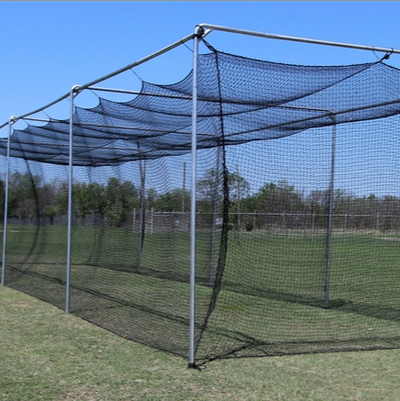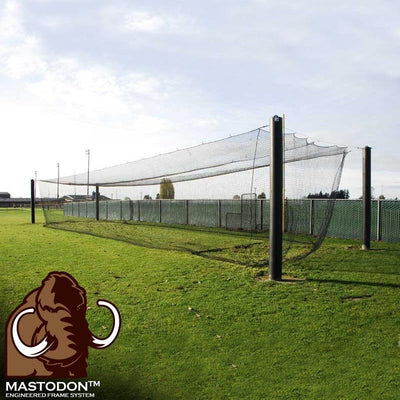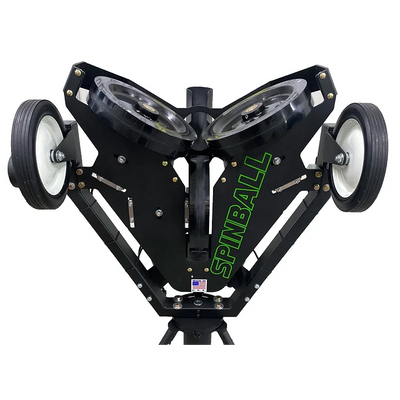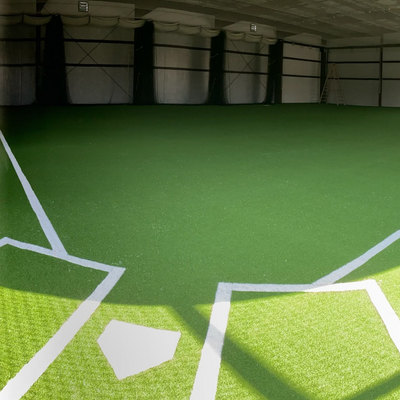The Swing Speed Radar is a small, inexpensive microwave Doppler radar velocity sensor that measures the swing speed of golfers and baseball/softball players. It assists players in optimizing their swing by providing a convenient measure of their swing velocity as they strive to improve their performance. For baseball and softball, it measures the barrel of the bat, not the tip, out front in the hitting zone. Rugged, compact design makes it convenient to carry and use in the batting cage, on the practice field, or in your backyard.
- Compact, portable & inexpensive
- Runs on 3 AA batteries, sets up in seconds
- Large, easy-to-read liquid crystal display
- Calculates clubhead or bat barrel speeds from 30-200 mph
- Includes 1-year warranty
- Highly accurate, to within 1 mph
- Comes with instructions, carrying bag, fence clips
- Increase bat speed
- Monitor your swing consistency
- Use it for optimal bat selection
- Measures Golf Swing Speed too!
Baseball and softball players train with it to also improve their distance without sacrificing bat control and contact consistency. Coaches enjoy the immediate feedback provided by the radar to reinforce instructions to "hit the ball out front". The Swing Speed Radar measures the barrel of the bat, not the tip, "out front" in the hitting zone. Used by Mike Candrea, Coach of the Arizona U 2006 NCAA FastPitch Champions and the U.S.A. National FPSB Team, and by prominent baseball coaches such as Jim Lefebvre, ex-Major League player, manager and hitting instructor, at his baseball school in Scottsdale, AZ.
How to Use It To measure bat speed “out front”, in the hitting zone where batters are taught to hit the ball, the Swing Speed Radar can be positioned in front of the batter, or behind the batter. The most important consideration in using the Swing Speed Radar is to position it in the plane of the swing as the bat enters the hitting zone, similarly to positioning a ball at the desired height and location on a tee.
If the batter is swinging “in air” without a ball, the Swing Speed Radar can be located forward about six feet in front of the hitting zone, at the height of the bat swing through the hitting zone. The radar can be mounted on a tripod or hung on a net or fence, using the two snaphooks provided. The batter is now swinging toward the radar as though it were the ball coming from the pitcher. This is an ideal location for bat swing training.
If the batter is swinging at a ball on a tee, the Swing Speed Radar must be located behind the batter to prevent the batted ball from striking the radar and/or erroneous reading caused by the unpredictable ball flight from the tee. The radar should be about six feet behind the tee, facing the ball on the tee and at the height of the ball. The radar must be sufficiently rearward, where a catcher would ordinarily be positioned, to prevent it from being struck with the bat .In this location, the batter is swinging away from the radar. To accomplish this positioning, the Swing Speed Radar can be mounted on a tripod, or hung on a net or fence by using the two snaphooks.
Whether the Swing Speed Radar™ is located rearward or forward, it will measure the speed of the bat barrel in the hitting zone. When determining the energy imparted to the ball, the maximum exit velocity results from the ball being struck at or near the “sweet spot” of the bat, which can be about 4” to 6” from the bat tip. Therefore bat barrel velocity is more relevant to ball exit velocity, and ball flight distance, than bat tip speed, which will be about 15%-20% faster than the “sweet-spot” velocity. Thus a 60 mph average barrel velocity will correspond to a bat tip speed of about 70 mph. However, a batter doesn’t intentionally hit the ball with the bat tip—so measure bat barrel velocity with the Swing Speed Radar.
TIPS FOR USING THE SPEED SWING RADAR FOR BAT SELECTION
- A short, compact swing allows the most time to react to the pitch.
- A light bat can be swung faster, and with more control to make ball contact, facilitating the short, compact swing better than a heavy bat.
- A heavy bat will provide more momentum to drive through the ball.
- A heavier bat, swung at the same speed as a lighter bat, will hit the ball harder and farther.
- Swing multiple candidate bats ten times each and record each swing speed.
- Alternate bats to eliminate physical biases. That is, swing bat A once, then bat B, then bat C; then bat D; swing D again, then C, then B, then A; repeat A, B, C, D, D,C, B, A ,A, B, etc, until the ten swings of each have been recorded. Average the speed for each bat.
- Select the heaviest bat that can be swung at, or near, the fastest average speed.
- Additional considerations include moment of inertia characteristics, incl. bat length, barrel size, shape, taper; sweet zone; and “feel” to the batter. The batter must be comfortable with the bat!










